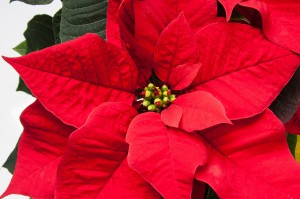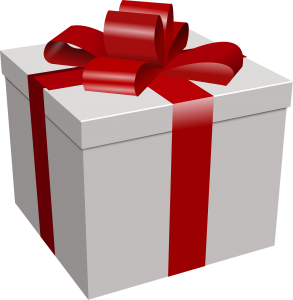This year was another remarkable year in science, with space shuttles retiring and new particles being detected (perhaps). Some of these top discoveries could very well have an immediate effect on our lives. The impact of others may not be felt for years. Some discoveries may vanish altogether. But no matter what, 2011 was a huge year in science & revealed major surprises all across the world! So, go back through the past 12 months with us as we present our list of the most interesting science stories of 2011.
1. Fukushima Nuclear Accident/Tsunami
On March 11, following astounding video footage of ships passing over farmers’ fields, as the tsunami washed over the Japanese landscape, came news that the nearby nuclear reactor had been compromised. Immediately, news stories recalled Chernobyl and Three Mile Island. Fear washed over North America and Europe, as explosions ripped through the reactor buildings. But in fact, no one died from the reactors themselves, and what could have been a major disaster was averted.
Thanks to heroic efforts on the part of the workers at the plant, sea water was poured on the overheated reactor cores and the melting nuclear fuel was prevented from escaping. Radiation that did get out was carried by steam into the atmosphere and water running into the sea, but while it was detectable around the globe, the levels were so low they were less that what we are exposed to naturally.
It will take years to clean up the site, and the accident renewed fear of nuclear power in the public mind, just at a time when many believed the industry was about to experience a renaissance as a clean alternative to fossil fuels.
2. 7 Billion and Counting
On Oct. 31 (an arbitrary date chosen by the UN), world population reached seven thousand million, a number that is hard to fathom. If we all joined hands with our arms outstretched, we would form a line that would circle the Earth about 175 times, or reach all the way to the moon and back about nine times. If everyone on Earth lived to the same level of consumption as Canadians, we would need several more Earths to provide all the food, water and energy. It was a time to take a serious look at our impact on the planet, as we continue to gobble up everything in sight and drive species to extinction at a rate similar to the extinction of the dinosaurs.
To ensure our survival, consumption must come down, which is not happening, and most experts say that people living in developing regions need better access to family planning. But the latter issue is more of a cultural and religious issue than a scientific one.
3. Faster than Light?
Scientists in Switzerland fired a beam of neutrinos to a receiving lab in Italy, more than 700 kiometres away, and the sub-atomic particles seemed to arrive a few billionths of a second early, suggesting they had traveled faster than the speed of light. If that is true, the longstanding theories of Einstein would be proven wrong, shaking the very foundations of physics.
The scientists themselves admit their measurements could be wrong, even though they have done the experiment twice. They are calling for other labs in the U.S. and Japan to try the same experiment.
If the results match, we could witness a fundamental change in the way we look at the universe, or at the very least, refine our measurements of it. It won’t likely lead to time travel. Then again, we could just be wrong. New results should come in the next year.
4. Award for The Dark Side
The Nobel Prize in Physics was awarded for the discovery of Dark Energy, a mysterious force that is pushing the universe apart.
This is the only force known to work against gravity and it is causing the expansion of the universe to speed up. The odd thing is that Dark Energy, along with Dark Matter, make up 95 per cent of the known universe, yet no one has a clue what either of them is.
Interesting that here in the 21st century, when we think we have so much figured out, most of the universe is still unknown to us. Further work at the Large Hadron Collider in Switzerland, which glimpsed the mysterious Higgs Boson, may also discover the nature of Dark Matter.
5. Not the “god Particle”
After half a century of searching for the hypothetical Higgs Boson, scientists at CERN say they got the first glimpses of the particle believed to have been responsible for all the mass in the universe.
Proof of the existence of the Higgs particle validates what is called the Standard Model of the universe, describing events at the very first moments of the Big Bang. The Higgs Boson was suggested as a missing piece of the mathematical model. If it is not proven to exist, physicists would have to re-write the theories of how the universe, as we know it, came into being.
6. End of an Era
After 30 years and more than 100 flights, the space shuttle program ended with the landing of Atlantis last July. Coincidentally, this year marks the 50th anniversary of the first human in space, Russian cosmonaut Yuri Gagarin.
Almost to underline the point, now that the shuttles are retired, the only way for Americans to fly up to the International Space Station is to hitch rides on Russian Soyuz rockets, their former rivals.
The shuttles accomplished a lot in space, building the Space Station, launching and repairing the Hubble Space Telescope. But they were also hugely expensive and dangerous. Two shuttles were destroyed in accidents killing 14 astronauts. In the end, each launch of a shuttle was costing more than $1 billion. It was time to let them go.
NASA unveiled plans for a new heavy lift rocket, but it won’t be ready to fly for years. Now it’s up to the Private Sector to take over.
7. Back To Mars and Beyond
While humans are restricted to spaceflight around the Earth, unmanned robotic probes continue to go where no one has gone before. The largest rover ever sent to another planet, Curiosity, was launched to Mars with the goal of looking for signs of life on the Red Planet. It will land next August.
Sadly, an equally ambitious Russian mission to one of the moons of Mars, Phobos, failed to leave Earth orbit and is expected to fall back to Earth in mid-January.
Another probe went beyond Mars to the largest asteroid, named Vesta, revealing a strange-looking round world that is a leftover remnant of the original material that built the planets, including Earth. And in the opposite direction, a probe named Messenger arrived at Mercury, the closest planet to the sun.
Discover more on the amazing science of 2011 with this awesome interactive timeline!





